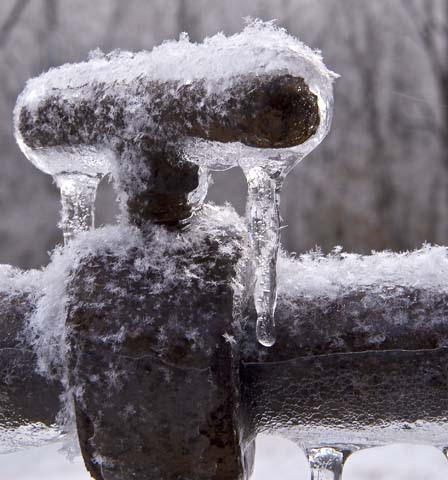Important Advice for Avoiding Frozen Pipes in Winter Conditions
Important Advice for Avoiding Frozen Pipes in Winter Conditions
Blog Article
In this article in the next paragraphs yow will discover a good deal of awesome ideas pertaining to Helpful Tips to Prevent Frozen Pipes this Winter.

Cold weather can wreak havoc on your plumbing, especially by freezing pipes. Here's just how to stop it from occurring and what to do if it does.
Intro
As temperature levels drop, the risk of icy pipes rises, possibly bring about costly repair work and water damages. Understanding exactly how to prevent frozen pipelines is essential for property owners in cool climates.
Comprehending Icy Pipelines
What causes pipes to freeze?
Pipelines ice up when revealed to temperature levels below 32 ° F (0 ° C) for extended periods. As water inside the pipes freezes, it broadens, putting pressure on the pipe walls and potentially triggering them to rupture.
Dangers and damages
Frozen pipes can lead to supply of water interruptions, residential or commercial property damages, and pricey repairs. Ruptured pipes can flooding homes and create extensive architectural damage.
Indications of Frozen Pipeline
Identifying icy pipes early can prevent them from breaking.
Exactly how to recognize icy pipes
Seek reduced water flow from taps, uncommon smells or noises from pipes, and noticeable frost on exposed pipelines.
Prevention Tips
Insulating vulnerable pipes
Cover pipes in insulation sleeves or utilize warm tape to protect them from freezing temperature levels. Focus on pipes in unheated or external areas of the home.
Heating strategies
Maintain interior spaces adequately heated up, particularly areas with plumbing. Open up closet doors to permit warm air to distribute around pipelines under sinks.
Shielding Exterior Pipes
Yard tubes and exterior taps
Detach and drain pipes garden hose pipes before winter season. Install frost-proof faucets or cover exterior taps with protected caps.
What to Do If Your Pipes Freeze
Immediate activities to take
If you believe icy pipes, maintain taps available to ease pressure as the ice thaws. Utilize a hairdryer or towels soaked in hot water to thaw pipelines slowly.
Long-Term Solutions
Architectural changes
Consider rerouting pipelines far from exterior walls or unheated locations. Add added insulation to attics, cellars, and crawl spaces.
Updating insulation
Invest in high-quality insulation for pipelines, attics, and walls. Correct insulation aids keep constant temperature levels and minimizes the threat of frozen pipelines.
Conclusion
Protecting against icy pipelines requires aggressive steps and fast responses. By comprehending the reasons, indicators, and safety nets, home owners can protect their plumbing throughout winter.
5 Ways to Prevent Frozen Pipes
Drain Outdoor Faucets and Disconnect Hoses
First, close the shut-off valve that controls the flow of water in the pipe to your outdoor faucet. Then, head outside to disconnect and drain your hose and open the outdoor faucet to allow the water to completely drain out of the line. Turn off the faucet when done. Finally, head back to the shut-off valve and drain the remaining water inside the pipe into a bucket or container. Additionally, if you have a home irrigation system, you should consider hiring an expert to clear the system of water each year.
Insulate Pipes
One of the best and most cost-effective methods for preventing frozen water pipes is to wrap your pipes with insulation. This is especially important for areas in your home that aren’t exposed to heat, such as an attic. We suggest using foam sleeves, which can typically be found at your local hardware store.
Keep Heat Running at 65
Your pipes are located inside your walls, and the temperature there is much colder than the rest of the house. To prevent your pipes from freezing, The Insurance Information Institute suggests that you keep your home heated to at least 65 degrees, even when traveling. You may want to invest in smart devices that can keep an eye on the temperature in your home while you’re away.
Leave Water Dripping
Moving water — even a small trickle — can prevent ice from forming inside your pipes. When freezing temps are imminent, start a drip of water from all faucets that serve exposed pipes. Leaving a few faucets running will also help relieve pressure inside the pipes and help prevent a rupture if the water inside freezes.
Open Cupboard Doors
Warm your kitchen and bathroom pipes by opening cupboards and vanities. You should also leave your interior doors ajar to help warm air circulate evenly throughout your home.

We are very eager about How to Prevent Your Pipes From Freezing and I hope you enjoyed our blog post. So long as you liked our post if you please make sure you remember to pass it around. Many thanks for taking the time to read it.
Book Today! Report this page